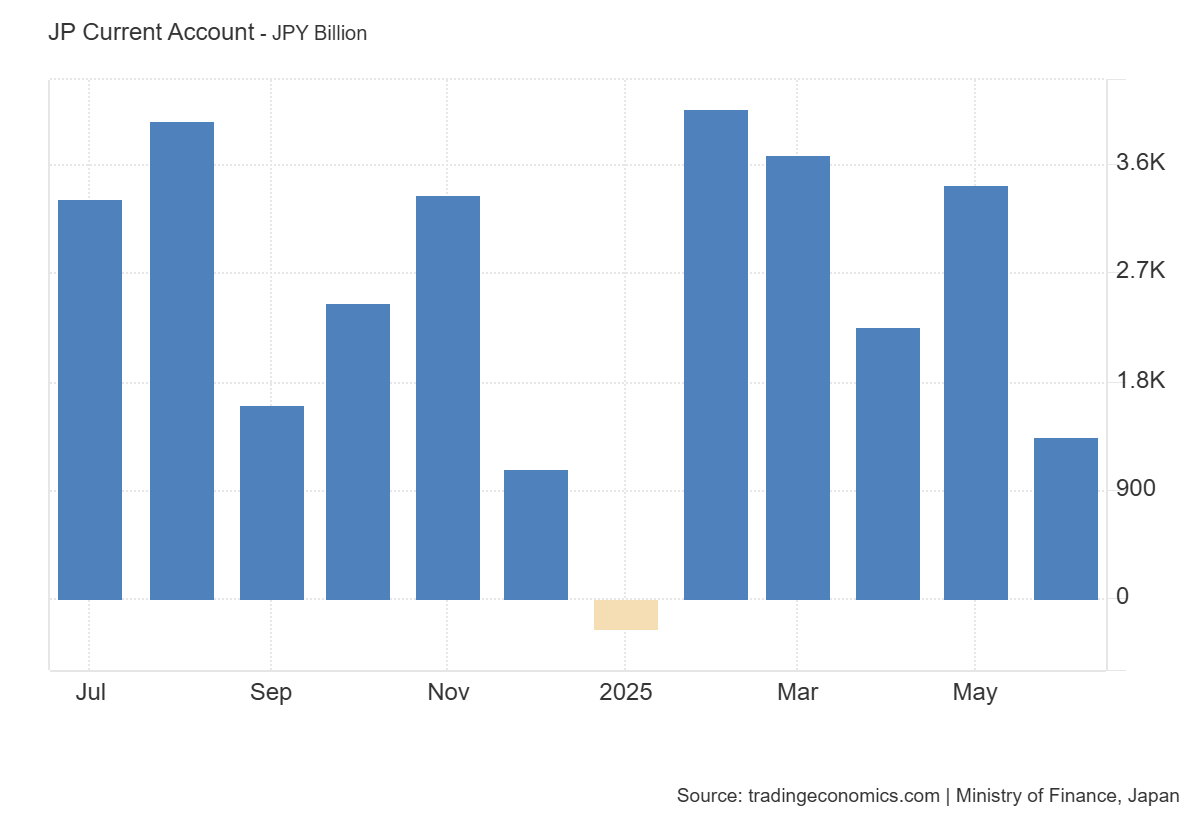JP 225 forecast: the index has formed an upward channel and targets a new all-time high
The JP 225 stock index hit a new all-time high and continued its upward trajectory. The JP 225 forecast for today is positive.
JP 225 forecast: key trading points
- Recent data: Japan’s current account for July totalled 1.348 trillion JPY
- Market impact: overall reaction for the broad equity market is neutral to restrained
JP 225 fundamental analysis
While the current account remains in surplus, it is significantly lower than both the consensus and the previous reading. The decline signals less favourable external conditions and higher import costs, which may limit corporate profit margins. At the same time, a likely soft yen partially offsets the effect by supporting exporters. As a result, the balance of factors for the index is mixed: there may be heightened sensitivity to news about global demand and energy prices.
For the JP 225, this means a mixed backdrop: export-oriented industries benefit from a weaker yen in the short term, while energy-intensive and import-dependent segments face shrinking margins. The index’s further trajectory will depend on global trade trends, energy price dynamics, yen movements, and the Bank of Japan’s assessment of the balance between policy normalisation and support for economic growth.
Japan Current Account: https://tradingeconomics.com/japan/current-accountJP 225 technical analysis
The JP 225 index has reached a new all-time high and remains in a strong uptrend. The support level lies at 40,315.0, with resistance at 43,385.0. There are currently no signals suggesting a reversal of the current trend. Consequently, the index is likely to reach a new all-time high again in the near term.
The following scenarios are considered for the JP 225 price forecast:
- Pessimistic JP 225 scenario: a breakout below the 40,315.0 support level could send the index down to 38,215.0
- Optimistic JP 225 scenario: a breakout above the 43,385.0 resistance level could drive the index to 44,215.0
Summary
The current account surplus remains, but it came in significantly below expectations and prior levels. This indicates less stable external support for the economy as import costs remain high, while export and income components are under pressure from global conditions.
The JP 225 index has formed an upward channel within a rising trend, with the next upside target at 44,215.0.
Forecasts presented in this section only reflect the author’s private opinion and should not be considered as guidance for trading. RoboForex bears no responsibility for trading results based on trading recommendations described in these analytical reviews.



